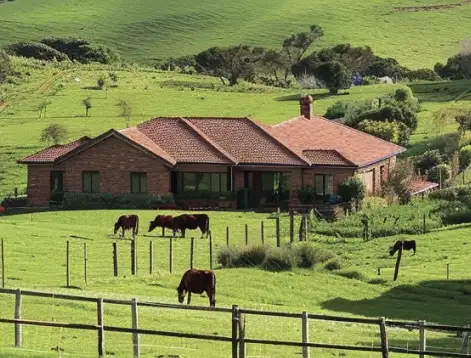What do you plan to do with the vacant land?
Banks have stricter lending guidelines for blocks of land than actual properties and, in many cases, they won’t finance remote or large properties.
The good news is that each lender has different lending guidelines so it’s still possible to get approved.
How much can I borrow for different block sizes?
- Up to 2.2 hectares (5.4 acres): Up to 95% of the property value.
- Up to 11 hectares (27.2 acres): Up to 95% of the property value (note that some lenders would restrict your loan to 80% of the property value).
- Up to 60 hectares (148.3 acres): Up to 80% of the property value (note that most lenders would decline your loan but some specialise in hobby farms).
- Up to 97 hectares (240 acres): Up to 80% of the property value.
- Over 97 hectares: On a case by case basis.
- Commercial farms: Up to 60% of the property value (all loans are assessed on a case by case basis using rural farm guidelines).
- Guarantor loans: Borrow up to 100% with select lenders only.
- If there’s a house on the block: If there’s a house on the land already, then you may be able to borrow 95% of the property value for properties up to 50 hectares in size.
For your reference, one hectare is equal to 10,000 m2 or 2.47 acres.
Note: Most lenders will have trouble approving mortgages for vacant land if the land is over 2.2 hectares in size. We have access to several lenders who can consider larger blocks of land depending on the strength of your application.
Our mortgage brokers are specialists in financing vacant land so please call us on 1300 889 743 or complete our free assessment form to find out how much you can borrow.
GET ENROLLED FOR THE Home Buyers Program
Learn how to buy a house and avoid costly mistakes in under 2 hours.
What will the bank assess?
- Land size: The larger the land, the fewer the number of people who are interested in buying it.
- Location: Land inside major cities and regional centres can be financed quite easily. At least one of our lenders has no location restrictions Australia wide.
- Access: The land must have direct access using an all-weather road but dirt roads are acceptable as long as they’re well maintained and the property can be accessed by a standard vehicle (not a 4WD).
- Services: The land must be within range to be connected to the electricity grid without excessive costs. Town water and sewerage services aren’t required as many Australian properties have tank water or septic tanks instead but some lenders will limit borrowing to 80% of the value of the property.
- Zoning: Land zoned rural or rural residential can be considered but industrial, commercial and farm/agricultuaral zoning is case by case. If the land is subject to GST, it will typically be seen as a commercial property by the banks.
- Land use: The land should be used for personal or investment purposes, not as a farm. Hobby farms with minor farm improvements and that generate little income from farm production are usually accepted.
- Intention to build: Many lenders consider someone who’s building on the land right away or within a year to be a lower risk than someone who has no intention to build. If you’re not, the bank may consider you to be a speculative investor and may decline your loan.
Why are the banks so conservative?
When the economy is weak, vacant land tends to fluctuate in value and may take longer to sell.
This is particularly true in country areas and remote locations where land prices fluctuate more often.
Normal houses on the other hand tend to have more potential buyers and sell much faster.
Banks are more conservative when approving a home loan for vacant land as a result of the higher volatility of land prices.
Apply for a home loan
Please call us on 1300 889 743 or complete our free assessment form for more information about how we can help you.
Our mortgage brokers are specialists in financing remote properties and large blocks of land so they can quickly let you know if you can qualify for a mortgage.
